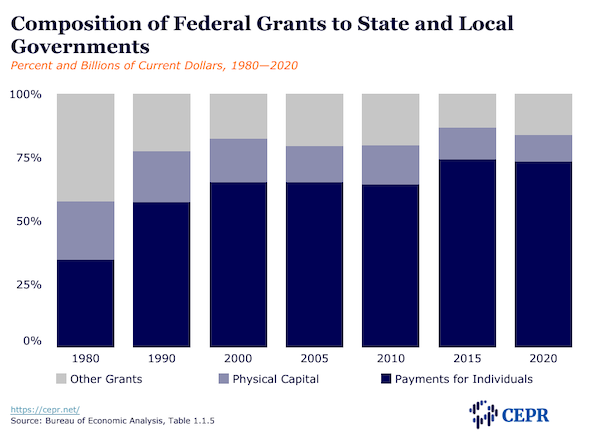•Press Release Budget
Washington DC — As Congress debates the contents of the federal budget for fiscal year 2022 and beyond, the question of aid to state and local governments remains salient. Senior Research Fellow Max B. Sawicky offers a detailed analysis of this neglected but key component of the economy in “These States: US Federal-State-Local Fiscal Relations in the Wake of Pandemic-Driven Recession,” released today by the Center for Economic and Policy Research (CEPR).
“Most public investment is carried on by state and local governments, so stagnation of federal aid injects a permanent, negative factor into US economic growth,” says Sawicky.
Unlike the federal government, most public services are delivered by state and local governments. If vital public services go bankrupt, the private sector — households and business firms — will bear the burden.
Sawicky warns, “the impact of [state and local governments] on any economic recovery is inescapable,” and, if ignored, “recovery will be unnecessarily prolonged.” But his article outlines the pressures faced by state and local governments in the pandemic-driven recession and offers several lessons that federal budget debaters could learn from:
